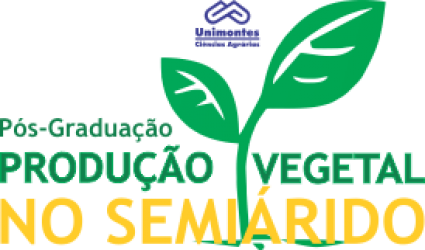- Version
- Download 6
- Tamanho do Arquivo 500.00 KB
- Data de Criação 14/06/2021
- Download
MARQUES, Pedro Ricardo Rocha. Características agronômicas de bananeiras tipo prata sob diferentes sistemas de irrigação. 2011. 65 p. Dissertação (Mestrado em Produção Vegetal no Semiárido) – Universidade Estadual de Montes Claros, Janaúba, 2011.
Genótipos de bananeira cultivados sob diferentes sistemas de irrigação podem diferir quanto à expressão das características vegetativas e de rendimento, ainda que nas mesmas condições de cultivo. Isso pode resultar de variações na aplicação da água no solo entre os sistemas que alteram a distribuição das raízes, o fluxo difusivo de nutrientes no solo, os teores de nutrientes nas plantas, com consequente mudanças na fisiologia das plantas, bem como, decorrer da variabilidade entre genótipos. Assim, o presente trabalho teve como objetivo avaliar as características agronômicas de bananeiras tipo Prata em três ciclos de produção (mãe, filha e neta), sob diferentes sistemas de irrigação nas condições semiáridas do Sudoeste da Bahia. Adotou-se o delineamento experimental em blocos ao acaso, com seis tratamentos dispostos em esquema fatorial 3x2: três sistemas de irrigação (aspersão convencional, microaspersão e gotejamento); e dois genótipos (‘Prata-Ana’, AAB, e seu híbrido PA42-44, AAAB). Utilizaram- se quatro repetições, parcelas em fileira, com seis plantas úteis, bordadura completa, no espaçamento de 3,0 x 2,5 m. Nas avaliações agronômicas realizadas na época do florescimento das plantas foram consideradas as características vegetativas, altura da planta, perímetro do pseudocaule, número de folhas vivas, comprimento e largura da terceira folha, área foliar total e índice de área foliar. Na época da colheita avaliaram-se as características de rendimento, peso do cacho, das pencas e do engaço, peso médio das pencas, peso das cinco primeiras pencas individualizadas, número de pencas por cacho, número de frutos por cacho, número de frutos por penca, peso, comprimento, diâmetro e índice de curvatura do fruto, e, também, o número de folhas vivas. Os dados foram submetidos à análise de variância. As interações significativas foram desdobradas e as médias comparadas pelo teste de Tukey, a 5% de probabilidade. Nos casos em que não ocorreu interação, analisaram-se os efeitos dos fatores isolados. As médias das características que apresentaram significância para o fator sistemas de irrigação foram comparadas pelo teste de Tukey, e para o fator genótipo, pelo teste F, a 5% de probabilidade. Os sistemas de irrigação influenciam mais as características vegetativas; a ‘Prata-Anã’ possui maior número de frutos e de pencas por cacho e o híbrido PA42-44 apresenta maior peso, comprimento e diâmetro do fruto. O sistema de irrigação por gotejamento proporciona menor vigor, expresso pelo porte e perímetro do pseudocaule, para bananeiras tipo Prata, em comparação aos sistemas de irrigação por aspersão e microaspersão.
Termos para indexação: Rendimento, Musa spp., genótipos AAB e AAAB, distribuição de água.
Agronomic characteristics of banana ‘Prata’ under different irrigation systems
Banana clones grown under different irrigation systems may differ in expression of vegetative traits and yield, even under the same culture conditions. This can result from variations in the application of water on soil between the systems that alter the distribution of roots, the diffusive flux of nutrients in the soil, nutrient content in plants, with consequent changes in plant physiology, as well as the variability between genotypes. Thus, this study aimed to evaluate the agronomic characteristics of ‘Prata’ banana in three production cycles (mother, daughter and granddaughter) under different irrigation systems in the semiarid conditions of Southwest Bahia. The used experimental design was in blocks at random with six treatments in a 3 x 2 factorial scheme: three irrigation systems (sprinkler, micro sprinkler and drip ) and two cultivars genotypes ('Prata-Ana', AAB, and its cross-PA42 44, AAAB). Four replications were used, the plots in a row, with six plants, complete borders, spaced 3.0 x 2, 5 m. In agronomic evaluations carried out during the plants flowering were considered vegetative characteristics, plant height, pseudostem circumference, number of alive leaves, length and width of the third leaf, total leaf area and leaf area index. At harvest time evaluated the characteristics of yield, weight of bunch, hands and the stalk, average weight of hands, weight of the top five individual hands, number of hands per bunch, number of fruits per bunch, number of fingers per hand, weight, length, diameter and curvature index of the fruit, and also the number of alive leaves. Data were subjected to variance analysis. Significant interactions were unfolded and the averages compared by Tukey test at 5% probability. When there was no interaction, the effects of isolated factors were analyzed. The averages of the characteristics which were significant for the systems of irrigation factor were compared by Tukey test, and for the genotype one, by the F test at 5% probability. Irrigation systems have more influence on the vegetative characteristics. The ’Prata-Anã’ has highest number of fruits and hands per bunch, and hybrid PA42-44 has greater weight, length and diameter of fruit. The system of drip irrigation provides lower vigour, expressed by height e circumference of pseudostem, for ‘Prata’ banana, compared to sprinkler and micro sprinkler irrigation systems.
Index terms: Yield, Musa spp, genotypes AAB and AAAB, water distribution.

